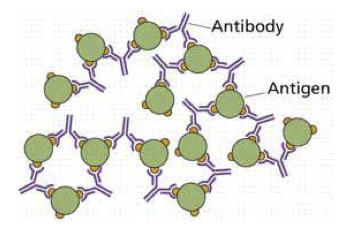What is the impact of NABs to interferon-beta on normal biology? #MSBlog #MSResearch
Do NABs have any other effects? Yes, I suspect so. We have only one copy of the IFNbeta gene and NABs probably neutralise our own IFNbeta. This may cause problems. IFNbeta is important for the body to fight infections, cancer and is involved in bone development. We have one patient who after developing NABs developed severe recurrent herpes; we have hypothesised that is occurred because her ability to fight the herpetic infection had been compromised by the loss of function of her own IFNbeta. With regard to cancer and bone growth we have no idea. I have asked all the Pharma companies who produce IFNbeta to look into this but my requests have fallen on deaf ears. The bone formation question will need to be looked for in children born to women with NABs. NABs cross the placenta and may interfere with the action of IFNbeta in the foetus and interfere with early bone formation. The effect on bone development may be very subtle. What about cancer? To look for an increased risk of cancers in MSers with persistent NABs would require a longterm study; the latter may be possible in Denmark where they have been measuring NABs routinely for decades and have excellent national cancer registries. The question is a simple one; do MSers who have NABs have a higher incidence of cancer than MSers without NABs?"
Epub: Gibbs et al. Antibody dissociation rates are predictive of neutralizing antibody (NAb) course: A comparison of interferon beta-1b-treated patients with transient versus sustained NAbs. Clin Immunol. 2014. pii: S1521-6616(14)00283-6.
Background: A proportion of MSers treated with interferon-β (IFNβ) develop neutralizing antibodies (NAbs) which can reduce therapeutic efficacy.
Background: A proportion of MSers treated with interferon-β (IFNβ) develop neutralizing antibodies (NAbs) which can reduce therapeutic efficacy.
Objectives and Methods: In the Betaseron/Betaferon in Newly Emerging MS For Initial Treatment (BENEFIT) study, 88/277 MSers developed NAbs, 48 having transient positivity and 29 having sustained positivity. This study aimed to investigate the antibody binding characteristics of serial sera in a subset of these two patient groups. Using Biacore™, a surface plasmon resonance-based technology that monitors biomolecular interactions in real-time, we immobilized pure IFNβ-1b and analysed antibody binding responses and dissociation rates of these sera.
Results: NAb titres correlated directly with binding responses and inversely with dissociation rates, and sera from sustained NAb patients demonstrated significantly higher binding responses and slower dissociation rates than sera from transient NAb patients.
Conclusion: Thus transient and sustained NAbs are quantitatively and qualitatively different, and interestingly, binding responses and dissociation rates at month 12 could predict the NAb course.
CoI: multiple
